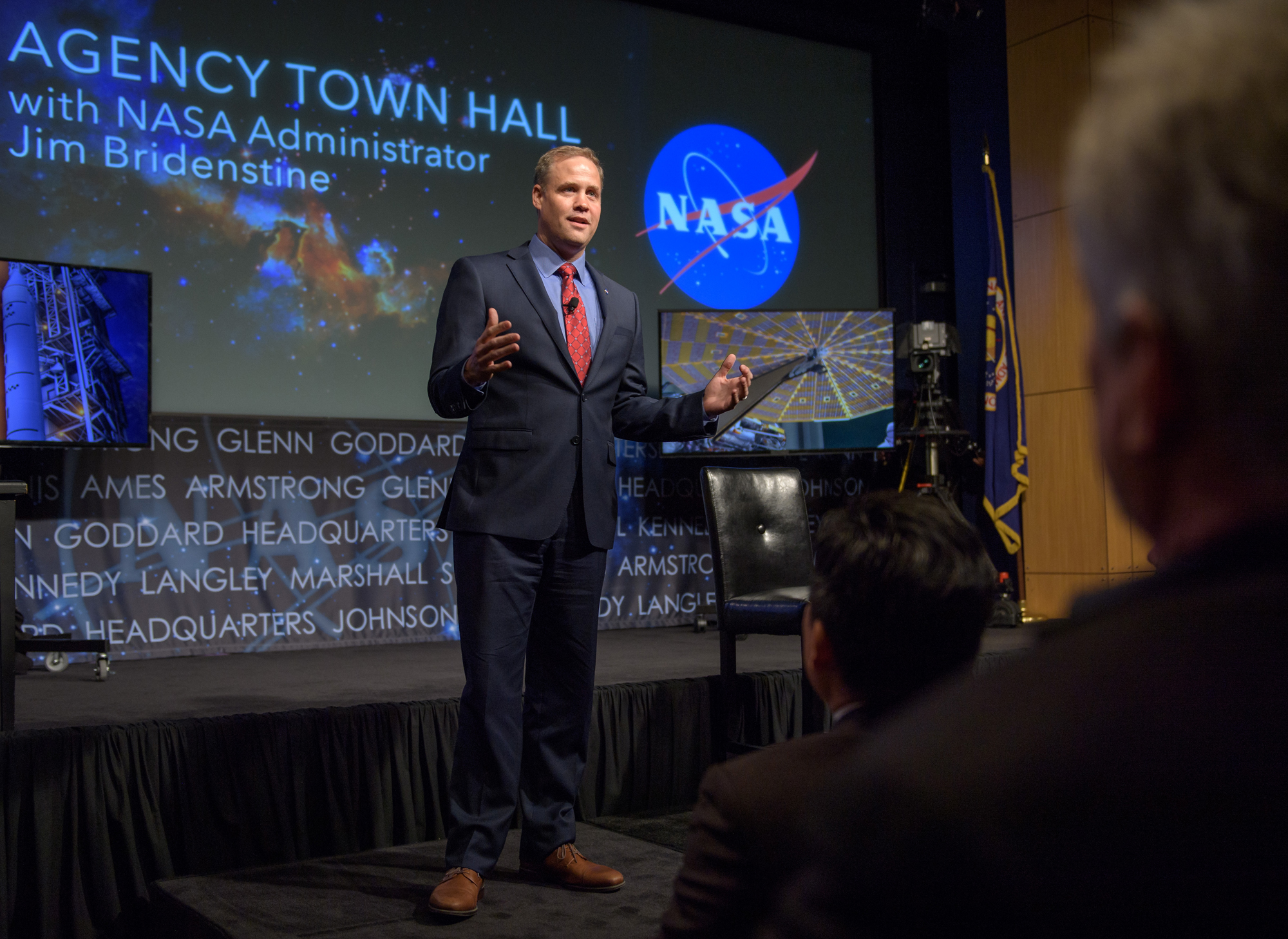New NASA Chief Bridenstine Says Humans Contribute to Climate Change 'in a Major Way'
In a NASA town hall yesterday (May 17), NASA's new administrator, Jim Bridenstine, said that he knows Earth's climate is changing, and that humans contribute to it "in a major way," also supporting NASA's research into that important area. The statement is significant because Bridenstine has expressed doubt about human-caused climate change in the past, causing some to question his suitability to lead a fact-focused NASA.
In 2013, as an Oklahoma congressman, Bridenstine claimed there was no current trend toward global warming. More recently, such as in his NASA administrator confirmation hearings last November, he has acknowledged that human activity contributes to climate change. But he had stopped short of saying that humans are the phenomenon's primary cause.
At the NASA employee town hall, Bridenstine described how his thinking had "evolved" on the topic and laid out his current beliefs.

"I don't deny the consensus that the climate is changing; in fact, I fully believe and know that the climate is changing," he said. "I also know that we, human beings, are contributing to it in a major way. Carbon dioxide is a greenhouse gas. We're putting it into the atmosphere in volumes that we haven't seen, and that greenhouse gas is warming the planet.
"That is absolutely happening, and we are responsible for it," he added. "NASA is the one agency on the face of the planet that has the most credibility to do the science necessary so that we can understand it better than ever before."
Get the Space.com Newsletter
Breaking space news, the latest updates on rocket launches, skywatching events and more!
Bridenstine's support of climate change research is in contrast to what many might expect from the current presidential administration: For instance, five Earth science and climate missions were written out of the White House's proposed 2018 NASA budget, and last year President Donald Trump pulled the United States out of the worldwide Paris Agreement to limit climate change.
Responding to a specific question on one of those cut climate missions, the Orbital Carbon Observatory Mission 3, Bridenstine said that, in his understanding, the mission is still set to launch in January 2019 after being funded by Congress.
Bridenstine reassured NASA employees that the agency will follow the National Academy of Sciences (NAS) guidelines that studying climate change is a top priority — particularly, reducing "climate uncertainty" by studying how interactions between the water cycle and energy cycle affect the changing climate, as well as looking at the impact of climate change on ecosystems.
"We need to make sure that NASA is continuing to do the science, and we need to make sure that the science is void and free from partisan or political kind of rhetoric," he said. "We have guidance from an apolitical, nonpartisan National Academy of Science telling us what is important for humanity, and we're going to follow it."
Bridenstine noted that NASA also says to prioritize weather and air-quality forecasting. His 2013 claim was that too much research is done into climate change instead of weather forecasting. Now, if his words to NASA employees are any guide, Bridenstine seems committed to supporting both.
Email Sarah Lewin at slewin@space.com or follow her @SarahExplains. Follow us @Spacedotcom, Facebook and Google+. Original article on Space.com.
Join our Space Forums to keep talking space on the latest missions, night sky and more! And if you have a news tip, correction or comment, let us know at: community@space.com.

Sarah Lewin started writing for Space.com in June of 2015 as a Staff Writer and became Associate Editor in 2019 . Her work has been featured by Scientific American, IEEE Spectrum, Quanta Magazine, Wired, The Scientist, Science Friday and WGBH's Inside NOVA. Sarah has an MA from NYU's Science, Health and Environmental Reporting Program and an AB in mathematics from Brown University. When not writing, reading or thinking about space, Sarah enjoys musical theatre and mathematical papercraft. She is currently Assistant News Editor at Scientific American. You can follow her on Twitter @SarahExplains.









